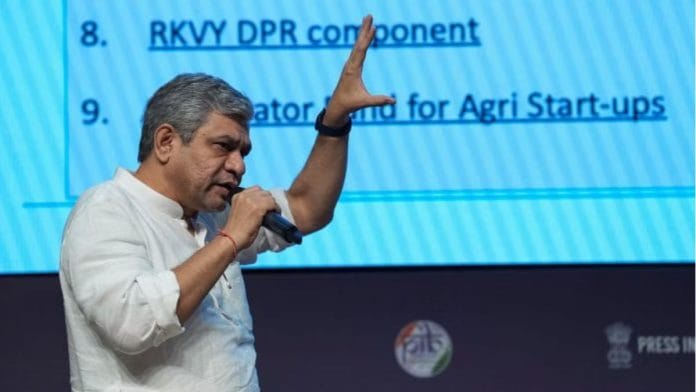New Delhi: The Union cabinet Thursday granted classical language status to five more languages—Marathi, Pali, Prakrit, Assamese, and Bengali. This follows the recognition of six other languages as classical, with Tamil being the first to receive the status in 2004.
“The Classical Languages serve as a custodian of Bharat’s profound and ancient cultural heritage, embodying the essence of each community’s historical and cultural milestone,” read the Union Ministry of Culture’s official statement.
However, the decision has sparked mixed reactions from linguistic experts. While some believe it is a “progressive and inclusive” move by the government that promotes linguistic diversity, which forms the backbone of India’s cultural identity, others argue that it is more about the “politics and the polity” than protecting and preserving the languages.
‘Political tool’ to empower certain languages
A linguistic expert believes that the designation of classical languages has historically been used as a “political tool” to empower certain languages.
“If you examine the case of Odia, for instance, some people, particularly in earlier times, viewed it as a dialect of Bengali rather than a distinct language. However, due to political pressure, Odia was eventually recognised as a classical language. Now, with the inclusion of Bengali, this political aspect of the classical language status becomes even more evident,” Dr. Hari Madhab Ray, assistant professor at the Centre for Linguistics, JNU, told ThePrint.
Ray, who has conducted immense fieldwork on different Indo-Aryan languages, also mentioned how the government needs to rethink the criteria for a language to be recognised as classical, and ask why certain languages are not included.
“As a linguist,” he said, “I believe it’s important to explore these issues, especially when it comes to languages spoken by indigenous communities—those who have lived here for centuries. For instance, consider the Santali community or the languages spoken by people in the Andaman and Nicobar Islands. There are so many languages in India that deserve to be protected before the ones that are included.”
The Santal are one of the largest indigenous tribes in India who are mostly spread across Jharkhand and West Bengal in terms of population, and also live in the states of Odisha, Bihar, Assam and Tripura.
‘Attempt to preserve rather than to exclude’
However, Dr. Vadthya Kishore, assistant professor of linguistics at JNU, argues that while there is certainly a chance that political motivations could be involved in the recognition of classical languages, the classification is an “attempt to preserve and celebrate India’s rich diversity rather than exclude others”.
“These languages are pillars of Indian civilization and represent centuries of accumulated knowledge, tradition, and artistic expression. Each language carries a unique heritage,” he told ThePrint.
“Some might argue that the recognition of more widely spoken languages like Bengali or Marathi, while valid, may overshadow the potential for including languages from indigenous or tribal communities, which also have rich traditional and cultural roots, but, unfortunately, are less documented or recognised, he added.
In fact, he further said, these indigenous languages have been neglected not just by the government but in terms of all aspects.
Benefits of designating languages as ‘classical’
Achieving classical language status brings several key benefits, some experts believe. Once a language is classified as classical, it receives targeted support from the Union Ministry of Education. This includes funding for research, the establishment of academic chairs in universities, and the creation of dedicated research centres.
These initiatives ensure that the language is preserved, studied, and promoted, securing its place in both academic and cultural discourses.
Three central Sanskrit universities—Rashtriya Sanskrit Sansthan, New Delhi; Shri Lal Bahadur Shastri National Sanskrit University, New Delhi; and Rashtriya Sanskrit Vidyapeetha (National Sanskrit University), Tirupati—along with the Central Institute of Classical Tamil (CICT) in Chennai and centres for excellence in classical Kannada, Telugu, Malayalam, and Odia under the Central Institute of Indian Languages (CIIL) in Mysore, are all part of government initiatives to promote and preserve these cultural languages.
Additionally, national and international awards have been established to honour contributions to classical languages. Among these, two prestigious international awards are the Presidential Award of Certificate of Honour and the Maharshi Badrayan Vyas Samman, both of which are presented annually to distinguished scholars in classical Indian languages.
The Bhasha Bharti Samman, Hindi Sevi Samman, and lifetime achievement awards are among the national honours for cultural languages. These awards not only recognise significant contributions to classical languages but also offer substantial monetary rewards, including a one-time amount of up to Rs one lakh and an annual grant of Rs 25,000.
While the experts appreciate the efforts by the government, they also mention how the government needs to do more.
“The government should undertake more initiatives, such as introducing these languages into mainstream academic curricula, encouraging academicians and others to translate these languages into their native tongues and vice versa, developing teaching modules under the National Education Policy (NEP) 2020, and working to digitally document literary texts, making them accessible on government websites for public use,” Dr. Kishore suggested.
(Edited by Radifah Kabir)
Also Read: Securing the classical language tag for Marathi took 10 years, 4 govts & multiple follow-ups






